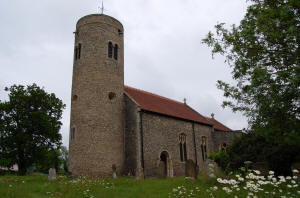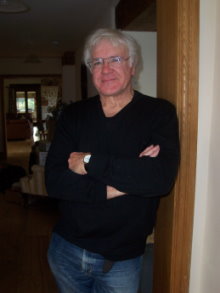| Gissing lies hidden in the depths of South Norfolk's
farmland - five miles north-east of
Diss. It is a tiny community with a school,
a pub (The Crown) and a dozen-or so houses which huddle around the beautiful St
Mary's Church. The name 'Gissing' derives from the place
(ingas) of Gyssa's people.

St. Mary's Church,
Gissing
During the 1960s the novelist Lindsay Clarke (1939- )
lived in the village and it provided the inspiration for
his second novel The Chymical Wedding (1989). His
protagonist, a young poet named Alex Darken, arrives in
the village (fictionalised as Munding) and begins to unearth details
about his Norfolk ancestors - in particular one Louisa
Agnew. The character of Louisa was probably based on that of Mary
Anne Atwood (1817-1910) who was a writer on hermeticism
and spiritual alchemy.

Lindsay Clarke
Darken also becomes involved with an alcoholic poet
called Edward Nesbit - who was almost certainly based on George
Barker (see Itteringham).
Clarke was a tutor to Raffaella Barker while she was
studying for her 'A' Levels - so was very familiar with
the family.
The Chymical Wedding - which won the 1989
Whitbread Prize for Fiction - features parallel stories: one
set in the
present and one in the past. The historical narrative
involves alchemy and the quest for self-discovery - hence the antiquated spelling of
the word 'chymical' in the title.
St. Mary's - which is a delightful round-towered
church - is also a familiar landmark in the novel and
Clarke describes it as follows: 'There has always been
something reclusive in the way Munding St Mary's clasps
the Norfolk light....'
Clarke now lives in Somerset and teaches creative
writing at Cardiff University.
|

